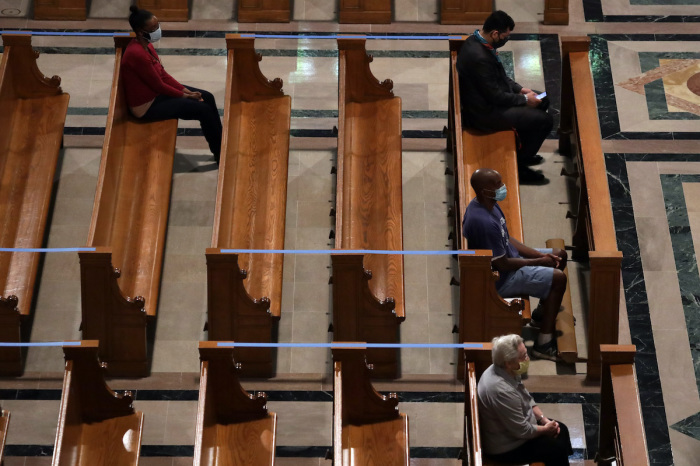Church attendance still short of pre-pandemic levels although most have reopened: survey

Nearly three years after the COVID-19 pandemic lockdowns forced churches across the United States to shut their doors, many attendees have yet to return, even as the vast majority of churches have resumed in-person services.
Lifeway Research released the results of a phone survey of 1,000 Protestant pastors conducted from Sept. 6 through Sept. 30, 2022, using a random sample from a list of all Protestant churches. Each interview was conducted with the senior pastor, minister or priest at the church, and responses were weighted by region and church size to reflect the population more accurately.
The findings reflect more anecdotal reports from ministries of all sizes, which are still struggling to regain their pre-pandemic form.
All pastors surveyed said their churches met in person in August 2022, compared to 75% who reported the same in July 2020.
But while churches are resuming the majority of their in-person services, on average, pastors say attendance at their churches in August was 85% of their Sunday attendance levels in January 2020.
Still, those attendance levels mark the highest in over two years.
The average church reported 63% of its pre-pandemic in-person attendance in September 2020. By August 2021, that number climbed to 73% and jumped another 12 points in 2022, according to the study.
"While there are a handful of exceptions, we can definitively say that churches in the U.S. have reopened," Lifeway Research Executive Director Scott McConnell said in a statement. "While masks began to rapidly disappear in many settings in 2022, churchgoers have not reappeared quite as fast."
A Lifeway study conducted earlier this year found 34% of Christians said they went to church at least four times a month before the pandemic, compared with only 26% in April 2022.
"While some pre-COVID churchgoers have not returned to church at all, much of the decline in attendance is from people who are attending less often," said McConnell.
Researchers say the trend also appears to hold along regional and denominational lines.
Pastors in the Midwest (26%) and South (25%) are more likely to say their church congregations are larger than they were before the pandemic compared to pastors in the Northeast (14%).
Evangelical pastors (29%) are almost twice as likely as mainline pastors (16%) to report pandemic attendance growth.
Roughly a third of all Pentecostal pastors, 30% of nondenominational pastors and 28% of Baptist pastors said their church congregations have grown since January 2020. By comparison, 14% of Presbyterian/Reformed pastors, 13% of Lutheran pastors, 10% of Restorationist Movement pastors and 8% of Methodist pastors said the same.
Nondenominational pastors (14%) were most likely to say their church is still less than 30% of pre-COVID attendance.
According to the survey, fewer churches are hitting the 100-person attendance mark on any given weekend.
As of August 2022, most American Protestant churches (68%) have congregations numbering less than 100 — nearly a third of which have fewer than 50 people.
Slightly less than a quarter of churches have congregations numbering between 100-249, while just 8% host 250 people or more per week.
The pandemic declines in attendance come as many churches and denominations were already facing declining attendance before the pandemic, creating financial difficulties that have forced many to close or substantially alter the ways they operate.
David Dummitt, the senior pastor of Willow Creek Community Church in suburban Chicago, said earlier this year that his megachurch cut staff due to the pandemic's impact on giving.
"Willow is about half of the size we were before COVID, which is right in line with the churches across the country. But as you can see, and as you can imagine, that has fiscal impactions," Dummitt said in a video shared on YouTube in early May.
Thom S. Rainer, founder and CEO of Church Answers and former president of Lifeway Christian Resources, attributed the post-pandemic trend of smaller congregations to several factors. Those include the now-broken habit of regular attendance, departed members who are unlikely to return and long-term "digital attendees" who Rainer says have dropped out altogether.
"The pandemic accelerated the pace for them to become a dropout," Rainer wrote in an op-ed in May. "It likely would have happened anyway."




























